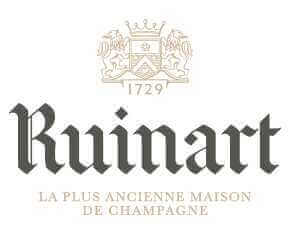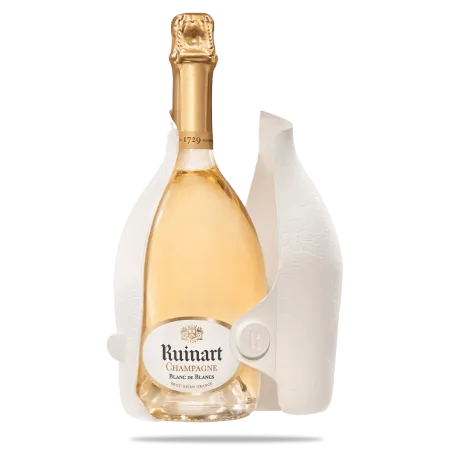
The history of the great Champagne House
Since 1729, the house Ruinart has been the embodiment of Champagne excellence. The leading official Champagne producer, Ruinart has established itself as a benchmark thanks to its unique expertise and unconditional love of Chardonnay.
In this article, immerse yourself in the world of this legendary house, discover its heritage and exceptional cuvées, and explore the unique experience offered by Ruinart through its tours and tastings
The shape of the traditional flute compresses the aromas and limits the breathing of the champagne, which can alter the perception of flavors. In addition, the low, wide bowl allows aromas to disperse too easily, diminishing the tasting experience.
History of Ruinart: A legacy from 1729
Founded in 1729 by Nicolas Ruinart, Ruinart was the first company to market champagne. Inspired by the teachings of his uncle Dom Thierry Ruinart, a visionary monk, Nicolas Ruinart understood early on the extraordinary potential of this sparkling wine.
The centuries that followed saw Ruinart establish itself as an emblematic Champagne house, upholding the art of winemaking and the tradition of exceptional Champagne.
Unique know-how: the art of assembly
Ruinart is distinguished by its artisanal approach and its attachment to Chardonnay, a noble grape variety that lends its cuvées incomparable freshness, lightness and elegance. Each bottle benefits from a rigorous winemaking process that enhances the purity and finesse of the aromas.
Les Crayères de Ruinart: A UNESCO Heritage Site
In the heart of Reims, the age-old chalk cellars of Ruinart provide an ideal environment for aging wines. Listed as a UNESCO World Heritage Site, these chalky cellars, dug more than 30 meters underground, ensure that champagne is perfectly preserved.
Our Cuvées : Exceptional know-how
Each cuvée Ruinart reflects the house's commitment to quality and innovation. Among the most famous:
- Blanc de Blancs: a pure, refined expression of Chardonnay.
- Ruinart Rosé: a perfect balance between freshness and intensity.
- Dom Ruinart: a prestige cuvée produced only in the best years.
- R de Ruinart: a champagne blend representing the spirit of the house.
>Discover all our cuvées
Experience Ruinart: Tastings and Exclusive Tours
The Ruinart house offers immersive experiences for champagne lovers. From pigeon-hole tours to guided tastings and masterclasses, every moment spent at Ruinart is an invitation to a sensory voyage.
FAQ
Why is Ruinart so prestigious? Ruinart is the oldest champagne house, founded in 1729. Its exceptional expertise, dedication to Chardonnay and commitment to excellence have made it a world reference.
What are the best food and champagne pairings Ruinart? Blanc de Blancs goes perfectly with seafood and refined dishes, while Ruinart Rosé sublimates red fruit desserts and certain white meats.
How to store a bottle of Ruinart? We recommend storing your bottle in a cool, dark place, at a constant temperature of around 10-12°C, lying down to keep the cork moist.
Is it possible to visit the Ruinart pits? Yes, Ruinart offers guided tours of its UNESCO-listed chalk pits, an unforgettable experience for champagne lovers.
How much does a bottle of Ruinart cost? Prices vary according to cuvée and year. On average, a bottle of Blanc de Blancs costs between €80 and €100, while prestige cuvées can fetch several hundred euros.
Where to buy Champagne Ruinart You can buy Ruinart online, at wine merchants and at leading champagne houses. Consult our guide to find out where to buy it.
Conclusion
For nearly three centuries, Ruinart has embodied the excellence and refinement of champagne. Its commitment to quality, its unique expertise and its exceptional heritage make it an absolute reference for lovers of fine bubbles.
Discover, savor and be seduced by the world of Ruinart!









